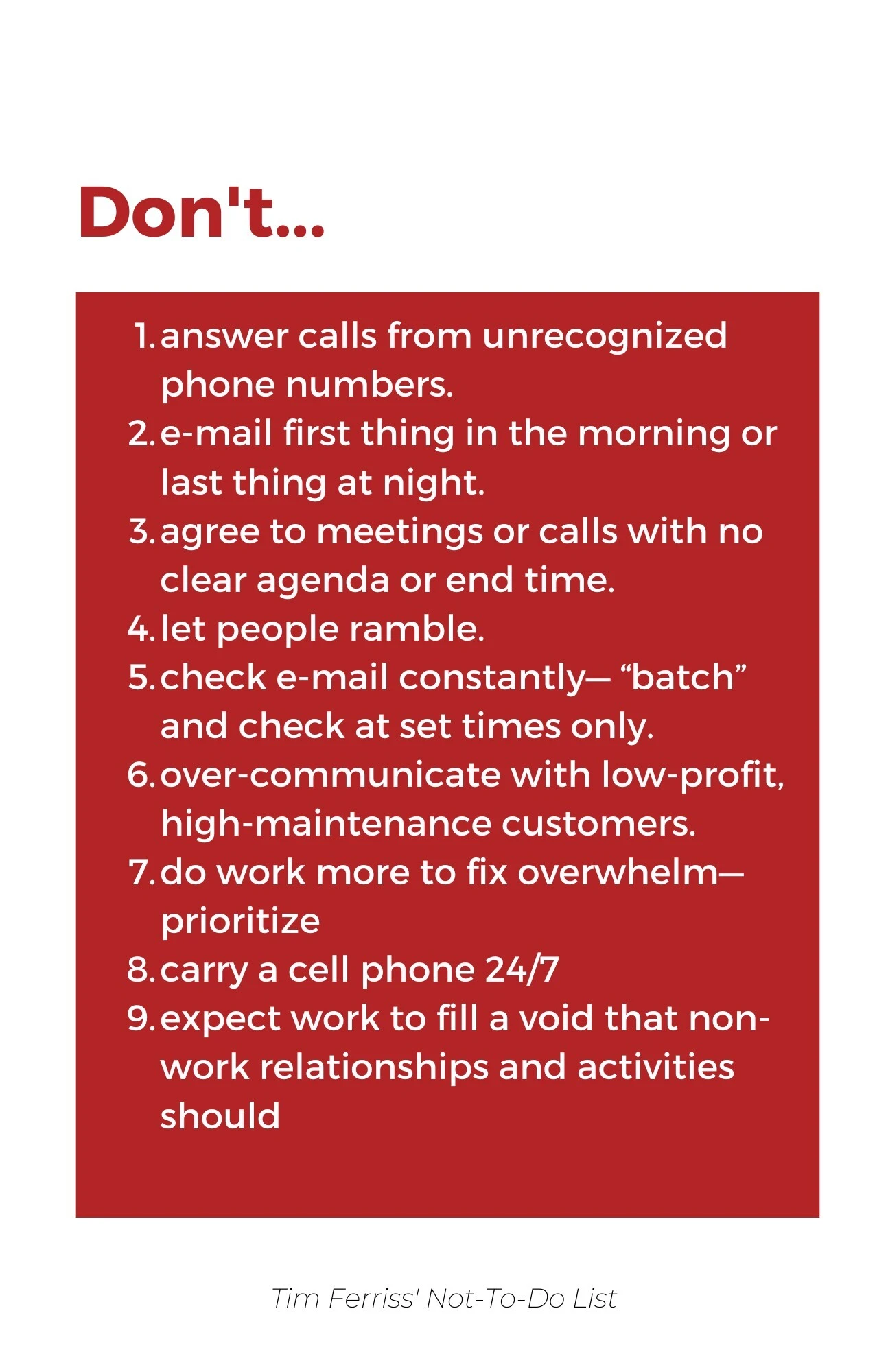What is one idea or project that you have been meaning to start? A new workout regime? Maybe even your own business? Then you’ve come to the right place. With this compiled list of hacks, tricks, tips, and methodologies, you are going to become a goal-achieving, life-hacking, productivity machine and churn those ideas into achievable goals. Are you ready?
Just in case you’re short on time, here is the key to achieving goals: a system. Never underestimate the power of an organized system. In this post, systems will be the underlying force driving these great methods. Keep reading for details on how to implement a few simple systems into your life.
Prioritize + Organize
One of the most important skills to have in order to be productive is to prioritize and organize well. A simple way to do this is to take time in your day, week, or month to create a list of tasks. Dive deep and mark what is most important. The most vital tasks should be notated so you can prioritize and put those first. Your list could be a post-it note list or a list on your phone but writing things down will help stick them to memory. I always keep a notebook with me, I use it to keep track of my lists, goals, thoughts, and sometimes doodles. If you really want to get organized you can have separate notebooks for different categories, such as work and personal. Another way to stay organized is from the author and consultant, David Allen. Allen is a productivity consultant who is best known as the creator of the time management method known as “Getting Things Done”. He offers an easy-to-follow process in his book, Getting Things Done. The process is as follows; Capture- Process- Organize- Review- Engage.
- Capture. Capture all the information that gets handed to you every day. Externalize everything that is holding your attention by writing it down.
- Process. Ask yourself if an action on your list is actionable. Can you do it in under two minutes? Then yes, it is actionable. Otherwise, file it away to do later or delegate if you can.
- Organize. Organize your items. What are the time restraints, deadlines, priorities, etc.?
- Review. Review your items weekly or monthly to track progress and set goals for the next period.
- Engage. Now, use the system to accomplish all your tasks.
If you still need a little inspiration on how to organize that list then look no further – Ivy Lee has a simple system to accomplish your daily tasks.
Single-Task: The Ivy Lee Method
Ivy Ledbetter Lee was an American publicity expert and a founder of modern public relations. Lee is best known for his public relations work with the Rockefeller family. In 1918, Lee was working for Charles Schwab when he was asked to aid the executive team in being more productive. He then explained his revolutionary, yet simple method to productivity and time management.

During a 15 minute conversation with each executive, Ivy Lee explained his simple daily routine for achieving peak productivity:
- At the end of each workday, write down the six most important things you need to accomplish tomorrow. Don’t write down more than six tasks.
- Prioritize those six items in order of their true importance.
- When you arrive tomorrow, concentrate only on the first task. Work until the first task is finished before moving on to the second task.
- Approach the rest of your list in the same fashion. At the end of the day, move any unfinished items to a new list of six tasks for the following day.
- Repeat this process every working day.
This productivity system is effective, why? This method does NOT allow room for excuses – and now, neither do you.
By writing your list down and prioritizing the night before, you make yourself accountable for your daily tasks. The key to this method is the focus it gives to each task, especially the first. By dedicating all your attention to one single task you are more productive, contrary to our multitasking culture. Quality over quantity will be your new mantra.
Have too many things on your list to count? Here are the key systems to time management from Tim Ferriss, an entrepreneur, author, podcaster, and angel investor in Facebook, Twitter, and Uber. He has written five books that have been featured on The Wall Street Journal and The New York Times Best Seller lists.
Time Management: Time Batching and the 12 Rules
I could go on and on about time management, but I am going to bring just a few tips into play today. One, being time batching. Time batching is the process of lumping similar tasks together and completing them at the same time to achieve a smoother flow of productivity. Skipping around from item to item disrupts the flow of whatever you’re working on. Block your time for specific tasks and breaks. I like to do all my brainstorming at once. Instead of 20 minutes a day going through emails from the Economist and other news or blogs, I save it for Monday and do it all at once and I am able to finish in one hour.
Remember to take time for yourself too. You could time batch your free time as well. Save it all for one day a week and recharge.
In the book, 4-hour Work Week by Tim Ferriss, Ferriss shows you how to cut the clutter out of your work life. His book has a lot of good points, but the system he created is paramount to time management. Ferriss outlines 12 rules to follow to be the master of time management. Alright, here it is. The most efficient system to live your life by.
- If this is the ONLY THING I accomplish today, will I be satisfied?
- Focus on the 20% of work that brings 80% of the RESULTS.
- Clearly DEFINE TIME for work and relaxation.
- Develop the most important habit: ACTION.
- Focus on being PRODUCTIVE instead of busy.
- DELEGATE & automate unimportant tasks.
- Do your most IMPORTANT task before 11 AM.
- Improve income PER HOUR, not total income.
- AGE doesn’t matter, an OPEN MIND does.
- Quit things that AREN’T working.
- Learn how to CONTROL your time.
- LEVERAGE your strengths.
One of the most important takeaways from these rules is to conserve all your energy to focus on doing the tasks that generate the largest results. If you remember one thing, remember rule two (Also known as the Pareto Principle): Focus on the 20% of work that brings 80% of the results. The top 20 percent of your to-do list is what will deliver most of the results. For example, my to-do list is as follows:
- Finalize report
- Finish project
- Reply to emails
What is going to bring the most results to my day? Finishing my report or responding to emails? The report without a doubt is going to bring the most results to my day. The 80/20 rule can be applied to numerous things. To learn more, check out this great blog post on the 80/20 rule from TheBalanceCareers.com. I love this website. They have so much content, I don’t think you would ever run out of reading material.
Track your Progress
Do you keep track of your goals and progress? You should. Don’t know where to start? Here are some free templates to download for goal tracking as well as some of my own designs I find work for me. Visualizing your goals and progress is beneficial to stay on track. This routine also sets up accountability for yourself. Hang this up on your fridge or make it your desktop background or maybe nail it to your ceiling.
If you are more technologically inclined, try using apps to track your progress. Google Calendar is a great resource for tracking your daily agenda, meetings, but you can even curate your own productivity schedule. With Google Calendar you can create separate calendars for work and life or, if you want to get wild, a productivity schedule. I love having my productivity schedule to keep me on track. Even if my days become monotonous, having a separate sheet for my daily tasks helps give my day structure.
Another app that is great is Productive. You can download this on any smartphone and test out the free trial, but it will set you back $30 a year. Productive allows you to build habits and keep track of your progress. This app is fun to use, and it is nice to see your monthly targets get hit, but the price tag did stop me from using it after a while.
Blocks
If you are feeling bogged down by the weight of your responsibilities and cannot fathom getting all your affairs in order, try this. Brain dumping. When you’re feeling overwhelmed write down all the things you need to do or are worrying about. Put those things into two categories; what you can control and what you cannot control. This visualization can help ease mental tension and get you back on track.
Conclusion
By following these few simple systems, you WILL become the most productive version of yourself. Someone once said it takes 30 days to begin a habit and 60 days to turn that habit into your lifestyle. What are you waiting for?
Boundaries
Do you find yourself endlessly distracted by hundreds of emails and chatty co-workers? The solution? To set boundaries for yourself, your time, and your energy. It is imperative for your productivity to do away with distractions. Here is Tim Ferriss’s must-do list on bad habits to end today to get rid of distractions and focus on your productivity.

